Light Pollution and Light Amount: Designing a lamp that prevents light pollution.
- Science, Engineering, Math
- 9-10
- 3th-4th
- 240 minutes

Area of Science:
Grade level:
Age of students:
Total time:
Preparation time:
Teaching time:
Teahing methodology to be used:
Creative Drama: Creative drama in education; It is to make animations on any subject, using techniques such as improvisation, role playing, with a group and based on the experiences of the group members. It consists of 3 stages.
- Preparation-Warm up: It is the stage of getting students accustomed to the group, place, subject and connecting with the next stage.
- Role-Play: They work in which a subject is formed, emerged, determined and exhibited in the process with a dramatic situation.
- Evaluation-Discussion: It is the discussion of feelings and thoughts on the importance, quality and quantity of the process.
Creative Drama Techniques:
Improvisation: Speaking and playing inwardly, without relying on a text.
Role play: It is the reflection of feelings and thoughts in a role assumed.
Dull image: Creating silent, wordless, still images with the body.
Key concepts:
Light pollution, amount of light, lighting
Overview
In this lesson, students will play a role in solving a daily life problem by using their own experience, knowledge and skills. They will discuss the negative effects of excessive amount of light and unsuitable lighting tools. They will discover design examples that will reduce light pollution.
They will design a suitable lighting lamp for the solution of a universal problem in accordance with the Engineering Design Process. Working in groups, they will develop their ability to work together. They will test their designs by experimenting and making measurements. They will present the measurement results with a column chart. They will identify the impact of different variables on their design. They will share their knowledge and experience by optimizing their designs.
Student mission
The park where you played and met with your friends in your neighbourhood has lost its former beauty. The trees you run around and play under are changing. You have observed that the leaves of some of the trees are budding, some of them are drying, and the colours of their flowers are different. You longingly remembered the days when you lay under the trees and the stars looked like tree lights. You started to look for the reason. You learned that excessive lighting in parks harms trees and other living things, disrupts their biological cycles, and causes light pollution. You think that your park, which is being maintained, has changed due to light pollution. You will decide to raise awareness by designing an outdoor lighting lamp to reduce unnecessary lighting in the park.
21st century technical skills gained through this activity
Critical Thinking
Collaboration
Creativity and Innovation
Problem Solving, Decision Making
Technology Operations and Concepts
Accessing and Analyzing Information
Curiosity and Imagination
Effective Team Work
Science Process Skills
Communication Skills
Analytical Thinking
Related job roles
Electrical-Electronics Engineers: Work on moving electrical components. Designs suitable lighting lamp.
Biologists: Question the effect of light pollution on the living environment. They share their expert opinion on the subject.
Astronomer: Questions the negative effect of light pollution on the observation of astronomical objects. They share their expert opinion on the subject.
Doctor: Questions the effect of light pollution on people’s health. They share their expert opinion on the subject.
Differentiation strategies to meet diverse learning needs
Students are encouraged to progress at their own pace.
Students are encouraged to work collaboratively with their peers.
Students are given feedback at appropriate times.
A supportive environment is created where trust develops.
Individual learning processes are supported for special learning needs.
An environment is prepared for them to share their feelings and thoughts.
Lesson plan
240 minutes
Time to complete Lesson
After this lesson, students should be able to:
- Explain the causes of light pollution.
- Give examples of the negative effects of light pollution on natural life.
- Define the effect of light pollution on sky observations.
- Produce solutions to reduce light pollution.
- Define suitable and unsuitable lighting tools.
- Explain the effect of correct use of lighting tools on economy.
- Define simple electrical circuit elements and creates an electrical circuit.
- Measure using smartphone apps. Interprets the measurement results obtained.
- Design a lighting tool in accordance with the engineering design process.
- Test and redesign their designs.
- Make an engineering presentation about the design created for the solution of the problem.
- Read a bar chart and create a bar chart.
- Make statements based on the data.
Expected Learning Outcomes
Dull Image: Creating silent, wordless, still images with the body.
Amount of Light: The total light flux from a source for a certain period of effect.
Light Pollution: It is the use of light in the wrong place, in the wrong amount, in the wrong direction and at the wrong time.
Appropriate Lighting: It is the lighting of the environment as much as necessary.
Column Chart: It is the representation of data in a bar chart.
Prior knowledge and vocabulary
Use the Scientific Inquiry model and the Test Your Idea template to help you with your investigative question. See Annex I. and II.
Science and Engineering/Math Practices
| S | Science
|
S.4.5.3.1. Question the causes of light pollution.
S.4.5.3.2. Explain the negative effects of light pollution on natural life and observation of celestial bodies. S.4.5.3.3. Produce solutions to reduce light pollution. S.4.5.2.1. Conduct research on suitable lighting. S.4.5.2.2. Discuss the importance of economical use of lighting tools in terms of economy. S.4.7.1.1. Recognize simple electrical circuit elements. S.4.7.1.2. Create a simple electrical circuit. |
| T | Technology
|
Measure design by using smartphone apps.
Interpret the obtained measurement results. |
| E | Engineering
|
Experience the engineering design process by preparing a lighting tool.
Make an engineering presentation about the design created for the solution of the problem. |
| M | Math | M.4.4.1.1. Examine the column chart, makes comments and predictions on the chart.
M.4.4.1.2. Create a column chart. M.4.4.1.3. Make statements based on data. |
Curriculum Alignment
Engage:
Activity 1: Teacher, “You are walking to meet your friends in the park after school… The park has been closed for maintenance for a while… You wonder about the recent changes in the park… You came to the park… You felt relieved when you saw the trees in place… You took a deep breath of the fragrance of the park… You met with your friends under it… You hung the highest branch of the pear tree and plucked the pear… You ate the pear with pleasure… You whistled to the bird sounds you heard… You played like a ball with the falling cones for a while… You watched the stars starting to shine in the sky… Over the lighting lamps placed on the ground in the park You skipped over… You noticed how bright the park was…” says. The teacher gives instructions at appropriate intervals. Students act in accordance with the instructions.
Activity 2: One less number of A4 papers than the number of students are scattered on the floor. Each of the laid papers is a tree. Students will be assumed to be sitting in the shadows of trees when they step on the papers. The students dance among the trees when the music starts. The teacher turns on the flashlight at the intervals determined. When the light starts to come on, the students sit in the shade of a tree. Only one student can sit in the shade of each tree. The student who is exposed because he cannot sit is out of the game. When the light goes out, the students start dancing. However, one of the trees in the park dries up. A piece of paper is missing from the floor. The aim of the students is to find a tree shade for themselves at a time. The game continues until only one student remains.
Activity 3: The teacher comes between the students with a light source. The teacher is the light source. Students are the stars in the sky. The light source makes the star it touches invisible. Stars run away to avoid being caught in the light source. The star touched by the light source becomes invisible and is out of the game. The game continues until all the stars are gone. The game can be played for a while by identifying new light sources.
What do you think about the events?
Why might the trees in the park have dried up?
Why are the stars not visible?
What do you think about the source of the problems in the park?
What effects do you think the increase in the amount of lighting can have on our environment?
Materials: A4 paper, music player, dance music, flashlight.
Preparation: [ 5] Minutes
Facilitation of Learning Experience: [15 ] Minutes
Transition: [ 10] Minutes
Teacher will: Teacher enables students to question the effects of increasing the amount of lighting in the environment.
Students will: They question the effects of redundant lighting on the living and non-living environment.
Explore:
Activity 4:
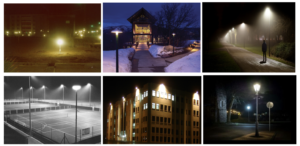
Images are reproduced as much as the number of students. Images are placed on the ground. Students begin to dance to the accompaniment of music. When the music stops, students pick up an image from the floor. Groups of 6 student are formed, with one image in each group.
The teacher tells each group to create a dull image by giving one of the following situations. They are given sufficient time to prepare.
- Migratory birds lose their migration routes due to the light rising from cities.
- Sea turtles that have hatched cannot reach the sea due to the excess light on the beaches.
- Too much light impairs the growth of plants and causes the trees to dry out.
- Loss of night vision due to excessive lighting causes traffic accidents.
- Excess lighting prevents seeing the universe and observing celestial bodies.
- Too much light causes people to lose their health by disrupting their sleep patterns and growth rhythms.
The groups take turns presenting their dull images. The students are asked what the dull image means. The student, touched by the teacher, explains his/her situation with the dull image. Talk about the dull images of whole groups.
What is the effect of excessive amount of light on the life of living things?
Can it be said that excess light causes pollution? Why?
What can be done to prevent light pollution?
The groups put together the images they received at the beginning of the activity. In consultation with their group mates, they select suitable and unsuitable lighting lamps (Annex III).
Materials: Images
Preparation: [ 5] Minutes
Facilitation of Learning Experience: [25 ] Minutes
Transition: [ 10] Minutes
Teacher will: The teacher can change the number of images in the 4th event. Supports students in the dull image preparation process and allows the concept of light pollution to be questioned.
Students will: Students question whether excessive amount of light and wrong lighting will cause light pollution. Identifies suitable outdoor lighting lamp samples.
Explain:
Activity 5:
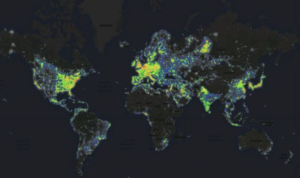
The image obtained from the satellite images of the Earth is examined. Regions with a large amount of light escaping into space are marked. The approximate costs of light escaping into space to some major cities are shared.
London – $3 million
New York – $14 million
Istanbul – $1 million
Paris – $3 million
Students are informed about the column chart. Together, the column chart is created.
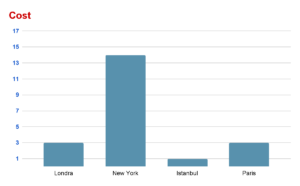
Ask questions about the graph. Students’ questions are answered.
Activity 6 :
Losing the Dark video is watched.
https://www.youtube.com/watch?v=dd82jaztFIo&list=PLDD79FC8870945AA5&t=42s
Students’ questions are answered. The following questions are asked to the students.
What effect does light pollution have on natural life?
How can the amount of light be decisive in our process of observing the universe?
What is the effect of light pollution on human health?
How can light pollution be prevented?
How to decide whether an outdoor lighting lamp is suitable or not ?
Why is it important to prevent light leakage into space?
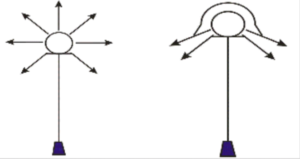
The image is shown to the students. They are asked which lighting lamp is suitable. Students explain their thoughts with reasons. They describe the characteristics of the suitable outdoor lighting lamp.
Students can be directed to watch the following videos according to their questions, interests and needs. The teacher can make this decision during the process.
https://www.youtube.com/watch?v=V_A78zDBwYE
https://www.youtube.com/watch?v=5gYIeT6GrkA
The International Dark-Sky Association (IDA) is introduced to the students. It is stated that light pollution is a universal problem and that IDA is struggling with it. It is stated that the website can be used for research.
Materials: Images, video links
Preparation: [5 ] Minutes
Facilitation of Learning Experience: [ 30] Minutes
Transition: [ 5] Minutes
Teacher will: The teacher makes up for the learning deficiencies of the students. guides students according to their learning needs.
Students will: Answers questions and inquires to find information.
Elaborate:
Activity 7: Simple electrical circuit elements, the visuals of which are given below, are introduced and distributed to the students. Students are divided into groups to form a simple electrical circuit.

The groups brainstorm on the characteristics of suitable outdoor lighting lamps that they determined in the previous activity. They determine the characteristics of suitable outdoor lighting lamps.
Students are introduced to the Engineering Design Process . Each step is reviewed (Ask, Imagine, Plan, Create, Test, Improve). Students design a lamp for parking lot lighting, taking into account the steps to be followed. They draw their designs (Annex IV). The designs of the groups are examined and their explanations are listened.
Activity 8: Groups are given aluminium foil, simple electrical circuit elements, bendable wire, model cardboard, scissors, ruler, tape, glue. The groups create models of suitable exterior lighting lamps they have designed for the park.
Groups measure the amount of light 10 cm above the lamps they model. The measured results are recorded using applications that measure the amount of light. Models can be improved by reviewing, measurements can be repeated. Students share what they changed in their models and why. They explain the effect of changes on the result (Annex V). The studies are evaluated with the Analytical Rubric for Lamp Design.
Activity 9: The groups introduce their final designs. They explain the situations that they paid attention to during the design process. They measure the amount of light by testing their models. The measurement results of the groups are recorded in the bar graph (Annex VI). Questions about the graph are answered.
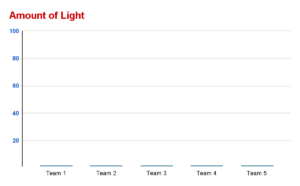
Which group has more light in their design?
Is there a group with equal amount of light?
What is the difference between the measurement results of the group with the highest amount of light and the group with the least amount of light?
Why is it important to represent numerical data with graphics?
Materials: Aluminium foil, simple electrical circuit elements, bendable wire, mock-up cardboard, scissors, ruler, tape, glue, light meter
Preparation: [ 10] Minutes
Facilitation of Learning Experience: [ 10] Minutes
Transition: [ 60] Minutes
Teacher will: Teacher supports the inquiry process of the students. leads them to research. It makes it easier for them to explain their results.
Students will: Students constantly test their models. They measure until they get the best result. They develop their models.
Evaluate:
Activity 10: Students come together in groups of 4. The teacher writes the words on the papers (biologist, engineer, astronomer, doctor) and folds the papers. Groups choose a spokesperson. The spokespersons draw one of the cards. Groups work in accordance with the specialization of their chosen profession.
The teacher said, “As a result of the maintenance work carried out in the park, you decided that the park lighting was arranged to cause light pollution. You must show the unit responsible for the arrangement of the park, the negative effects that may be experienced if the park is not properly illuminated. In addition, you aim to draw the attention of the people of the surrounding area to this point. Prepare a poster that you have designed for this purpose, where you both promote the outdoor lighting lamp and reflect your professional point of view.” Groups are given coloured cardboard, crayons, glue, scissors, ruler. Prepared posters are hung on the wall. Students examine the posters. They express their feelings and thoughts about the activities.
Materials: Colored cardboard, crayons, glue, scissors, ruler
Preparation: [ 5] Minutes
Facilitation of Learning Experience: [10 ] Minutes
Transition: [ 35] Minutes
Teacher will: The teacher encourages students to express their feelings and thoughts. It supports students’ problem identification and solution process.
Students will: Students introduce their designs. They redefine the problem from a professional perspective and mobilize for a solution.
Independent learning tasks (ILT):
Students will watch the video links given to them by the teacher to improve their knowledge.
Students observe the lighting tools in the areas like parks, streets, etc. around them. They share photos of suitable and unsuitable lighting lamps. They inform the people around the area.
Lesson
At the end of the related activities, the students are asked the following questions.
- What did I learn in this activity?
- What parts of this activity did I enjoy most?
- What were the parts that I had difficulty in doing?
At the end of the determined main activities, they are provided to fill out the self-evaluation form (Annex 7).
Student feedback
Science: Suitable Lighting, Light Pollution, Simple Electric Circuits- Innovation, Creative Thinking
Math: Data Collection and Evaluation- Explanation
They are applications in which life experiences are reflected based on the problem of daily life. Science and mathematics integration, critical thinking process is supported. Problem solving and questioning determine the progress of the process.
Curriculum mapping of outcomes attained
The process should be evaluated with the result. This requires a time-spanning data collection process. Field notes should be taken in order not to miss important points and to follow up on instant developments. The grades and descriptions taken by the teacher during the teaching are important for the evaluation of the process.
A rubric designed for the evaluation of student products is used. The design and promotion process of the products should be taken into consideration as well as the products. Students should be given the opportunity to evaluate their own products.
The change and development in students’ feelings and thoughts should also be included in the evaluation process. Allowing students to question their feelings and thoughts allows students to discover themselves.
Determining their readiness before the application is important in terms of determining the efficiency of the teaching process. For this, the teacher’s observations and directions are the most important data source.
The process of identifying and evaluating skills requires questioning. It is important for the teacher to be a good listener as well as asking good questions.
Materials
Materials: Aluminum foil, simple electrical circuit elements, bendable wire, mock-up cardboard, scissors, ruler, tape, glue, colored cardboard, crayons, images.
Online Resources and Applications Used:
https://www.youtube.com/watch?v=dd82jaztFIo&list=PLDD79FC8870945AA5&t=42s
https://www.youtube.com/watch?v=V_A78zDBwYE
https://www.youtube.com/watch?v=5gYIeT6GrkA
Light Meter Application
Preparation
The aim of this lesson; To create a lighting lamp model in order to reduce the effect of light pollution on our environment, which is caused by the excess amount of light and not using suitable lighting tools.
Light pollution has become a universal problem with the development of technology. It is important to be aware of the damage that light pollution does to our health and environment. Turn this problem into an engaging problem for students. Involve them in the problem solving process.
Question the existence of a study on the effects of light pollution in your environment. Create examples by making observations about this problem that we encounter at home, on the street, at school, at work. The problem chosen for this lesson will be given through creative drama studies. Make the problem feel in the preparation-warm up work of the lesson. Try to evoke a sense of curiosity.
Make sure you have the materials ready for the lighting lamp model. Not only outdoor lighting lamp, but also indoor lighting lamp model such as home, school can be created. Watch the videos that will be used in the lesson. Get to know the communities established against light pollution.
Team Work
The lighting lamp design process reflects the students’ collaborative solutions to the daily life problem. It develops with their life experiences and observations. It enables them to develop trust and partnership in the inquiry process. Change and development together is the most important gain of the process. Students experience, try and learn the subject or subjects together with group work.
It enables them to look at the same problem from different perspectives. There is a search, a curiosity, a desire to find. It consists of process-oriented studies, not results. It supports the progress of the group according to its characteristics, needs and interests.
Rubrics
| Scale of Independent Work | |||||
| Zero Independence | A lot of Help with Some Independence | Semi Independent | Fully Independent | ||
| Teacher gives students a full method with clear instructions for how to carry out the experiments & engineering design. | Teacher gives students an outline for the procedure but allows options* at different steps. Teacher gives students an outline for the procedure to carry out the experiments& engineering design but with some options in technique and equipment. | Teacher specifies the procedures. Students research the method to carry out for the preparation of the experiment & engineering design. Students research methods to carry out the experiments& engineering design, using the equipment provided. | Students research methods for carrying out the experiment & engineering design and choose the methods and equipments to use. | ||
| Observation and Assessment of Competencies | |||||
| Follow written and oral procedures | Students follow written and oral instructions | Students follow written and oral instructions, making individual choices in technique or equipment. | Students follow a method they have researched | Students follow a method they have researched | |
| Safely uses a range of practical equipment and materials | Students must safely use the equipment. | Students must safely use the equipment. | Students minimise risks with minimal prompting. | Students must carry out a full risk assessment and minimise risks. | |
| Apply investigative approaches and methods when using instruments and equipment | Students must correctly use the appropriate equipment. Procedure should be followed methodically and appropriate variables measured or controlled. | Students must correctly use the appropriate equipment.
Procedure should be followed methodically and suitable variables identified, measured and controlled. |
Students must correctly select and use the appropriate equipment. Procedural steps should be well sequenced and adjusted where necessary. Suitable variables identified, measured and controlled. | Student must choose an appropriate methodical approach, equipment and techniques. Procedural steps should be well sequenced and adjusted where necessary. Suitable variables should be identified for measurement and control. Where variables cannot be readily controlled, approaches should be planned to take account of this. | |
| Makes and records observations | Students record data in specified ways. | Students record accurate data in specified ways. | Students record precise and accurate data, methodically using appropriate units, in specified ways. | Students must choose the most effective way of recording precise and accurate data methodically using appropriate units. | |
| Researches, references and reports | Data is reported and conclusions drawn. Students carry out presentations on the practical activities with a lot of guidance. | Data is reported and conclusions drawn. Students compare results and identify reasons for differences. Students carry out presentations on the practical activities with some guidance. | Students must research methods available. They compare results and report on differences. Appropriate graphics & tables are used to process data and report findings. Students carry out presentations on the practical activities with minimal teacher help. | Students must research alternatives in order to plan their work. Reporting covers the planning, carrying out and an analysis of their results. Appropriate graphics,tables and/or tools are used to process data and report findings. Students carry out presentations on the practical activities with no teacher help. | |
*Options: The more options the more student autonomy. Teachers give the students options so that the student can develop their problem solving skills. The more options the teacher gives to students, the student has greater opportunities for problem based learning and independent learning. This is measured against the practical rubrics from zero independent to full independent learning
| Analytical Rubric for Lamp Design | |||
| Qualification | Insufficient (1) | Good (2) | Perfect (3) |
| Lamp design making | Lamp design unfinished | Lamp design created | Lamp design created and added visuality |
| Evaluation of lamp design | Lamp design not evaluated | Lamp design evaluated | Lamp design evaluated
and redesigned according to the evaluation result. |
| Promote lamp design and share the process | Introduction not done well | Introduction well done | Introduction very well done |
| Introduction well done | Light pollution unexplained | Light pollution explained | Light pollution explained |
Ek
Annex. I.
Scientific Inquiry

Annex II.
Test Your Idea Template
| Testing Your Idea Organizer | |
| 1. Investigative Question
Your question should relate the manipulated variable to the responding variable. |
Investigative Question: What causes excessive use of light and inappropriate lighting tools?
|
| 2. Hypothesis
Your hypothesis should be written as an “IF, THEN, BECAUSE” statement. |
|
| 3. Variables
● Manipulated Variable (What you will change) ● Responding Variable (What you will measure) ● Controlled Variables (What will remain constant throughout the test) |
|
| 4. Materials
Create a list of all materials you need.
|
|
| 5. Procedure
Should include… ● Manipulated Variable ● Responding Variable ● Controlled Variables ● Logical, Repeatable Steps ● Recording of Specific Data ● Repeated Trials |
|
| 6. Data
● Design a table for organising data you will be collecting during your test. ● Use your procedure to collect and record data. ● Display your data using appropriate graphs and/or charts.
|
|
| 7. Conclusion
● State your conclusion relating the manipulated variable to the responding variable. ● Use data to justify your conclusion. ● State whether your hypothesis can be accepted or rejected based on observed data.
|
|
| 8. Analysis
● Discuss potential sources of error and the potential influence on your results.
● Provide ideas on how and why the experimental design might be improved.
● Describe surprising data.
● List ideas for revising your test idea or new related ideas to test.
|
|
| 9. Present your findings to your class. |
|
Annex III
Identify suitable and unsuitable lighting lamps. Please explain your reason.
| Images | Suitable lighting lamp | Unsuitable lighting lamp | Why? |
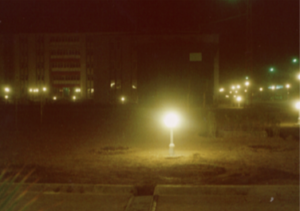 |
|||
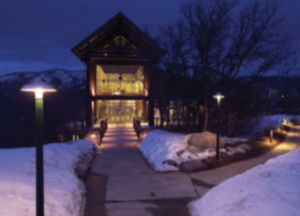 |
|||
 |
|||
 |
|||
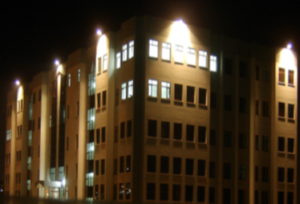 |
|||
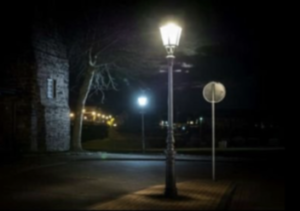 |
Annex IV
|
Lighting Lamp Design Name: Team Members: Assignment: The park where you played and met with your friends in your neighbourhood has lost its former beauty. The trees you run around and play under are changing. You have observed that the leaves of some of the trees are budding, some of them are drying, and the colours of their flowers are different. You longingly remembered the days when you lay under the trees and the stars looked like tree lights. You started to look for the reason. You learned that excessive lighting in parks harms trees and other living things, disrupts their biological cycles, and causes light pollution. You think that your park, which is being maintained, has changed due to light pollution. You decided to raise awareness by designing an outdoor lighting lamp to reduce unnecessary lighting in the park. Materials: Aluminium foil, simple electrical circuit elements, bendable wire, mock-up cardboard, scissors, ruler, tape, glue, light meter. Draw The Lighting Lamp You Designed
|
Annex V
Let’s test your lamp designs. Measure the amount of light with a light meter.
Make new edits to your design and re-measure.
Keep trying until you get the best result.
Observation Chart
| Measurements | Amount of Light | Changes Added to The Design |
|
1.
|
|
|
|
2.
|
||
|
3.
|
||
|
4.
|
||
|
5.
|


Annex VI
Let’s test your lamp designs. Measure the amount of light with a light meter. Create a column chart after saving the data.
| Groups | Amount of Light |
| 1. | |
| 2. | |
| 3. | |
| 4. | |
| 5. |

- Which group has more light in their design?
………………………………………………………………………………………………………….
- Is there a group with equal amount of light?
………………………………………………………………………………………………………….
- What is the difference between the measurement results of the group with the highest amount of light and the group with the least amount of light?
………………………………………………………………………………………………………….
- Why is it important to represent numerical data with graphics?
………………………………………………………………………………………………………….
Annex VII
SELF-EVALUATION FORM
Student’s Name:
Activity Name: Light Pollution and Light Amount: Designing a lamp that prevents light pollution.
Instructions: This self-evaluation form has been prepared to evaluate your performance in the activity. Express your views by answering the questions below.
- What did I learn in this activity?
………………………………………………………………………………………………………………………………………………………………………………………………………………………………………………………………………………………………………………………………………………………………
- What parts of this activity did I enjoy the most?
………………………………………………………………………………………………………………………………………………………………………………………………………………………………………………………………………………………………………………………………………………………………
- What were the parts that I had difficulty in doing?
………………………………………………………………………………………………………………………………………………………………………………………………………………………………………………………………………………………………………………………………………………………………
